Microsoft Lync enters mobile platforms, client review, server setup
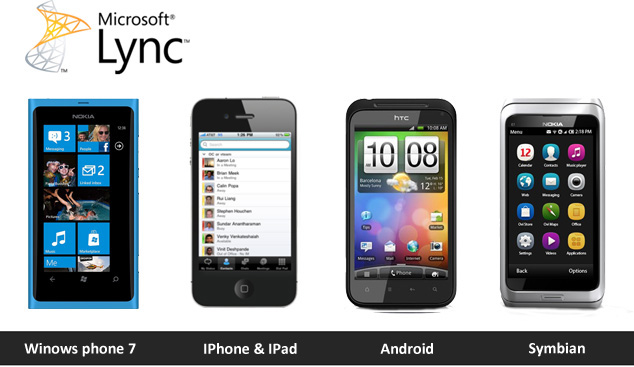
Good time, dear Habrosocommunity.
In November, Microsoft released the highly anticipated Lync Server 2010 Enterprise Communication Server update, which allows mobile clients to connect. However, by that time there was not a single mobile client, under any platform, even under the native Windows Phone. From early press releases, Microsoft made it clear that it would begin developing Lync clients for WP7, Android, iOS, Symbian, and BlackBerry. Fortunately, it was not so long to grieve.
Last week, the Lync client appeared under Windows Phone 7 (Mango) and Android, this week under iOS (iPhone, iPad), the client should launch the other day under Symbian, and is expected to launch under BlackBerry in January. The functionality of clients for different platforms varies, here is a comparison plate:

Oddly enough, among all competing platforms, only Android has the most trimmed functionality.
The main functions of Lync Mobile for all platforms:
- information about the presence of colleagues, the choice of the best way to communicate - using instant messages, email or phone;
- A simple way to organize a conference;
- a single interface for making and receiving calls in corporate voice communications
- Protection of data transmission via TLS, without the need for a VPN.
Organization of calls:
Voice communication between Lync contacts is carried out through the PSTN gateway using callback. The organization of calls by this method can be interpreted both from a positive and a negative point of view:
+ the call does not go through VoIP, therefore, you do not depend on Internet coverage (Wi-Fi, 3G), the Internet in roaming is often more expensive than voice. Using callback, you do not care about the price of the call, the company takes all the costs, subject to free incoming calls. Using this method, the main advantage for business is achieved - to be always in touch
- A more complex and expensive scheme for organizing calls using PSTN gateways. To reduce the cost of calls, you can use the SIP provider, but most of them are not compatible with Lync Server. To solve this problem, you can use Asterisk (if you are interested in how to do this, we can write an article)
Continuing the topic of criticism regarding mobile clients:
- lack of push technology on Android, unlike WP7 and iOS
- the title color in WP7 is always blue, does not change color when you change the theme on the phone
- poor client optimization for tablets
- the clipboard does not work in Android
- there is no way to make video calls and transfer files
Screenshots of mobile clients:
iOS
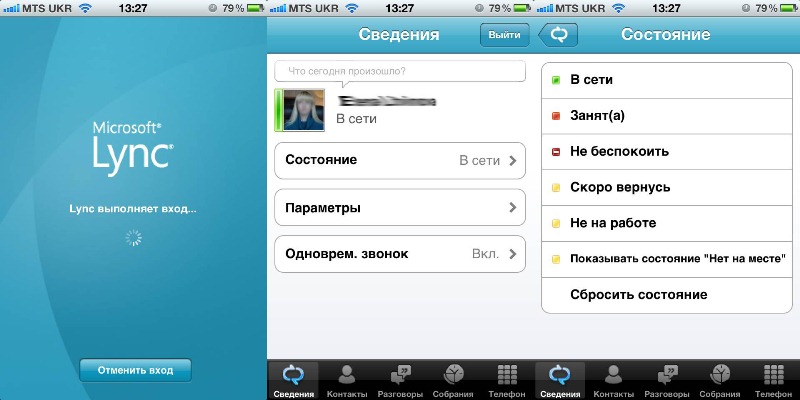
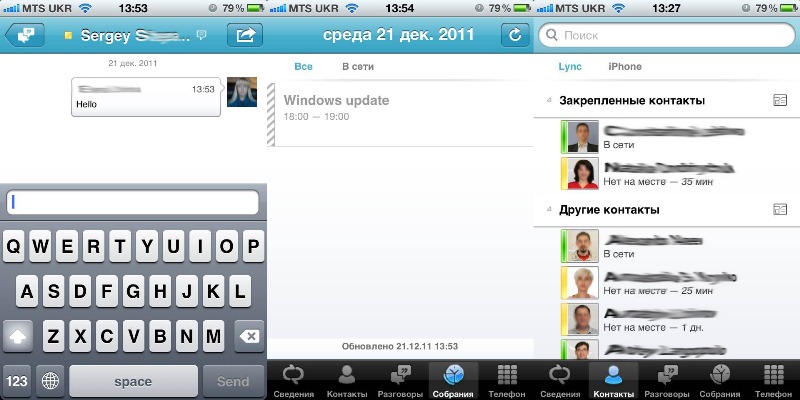
Windows Phone 7
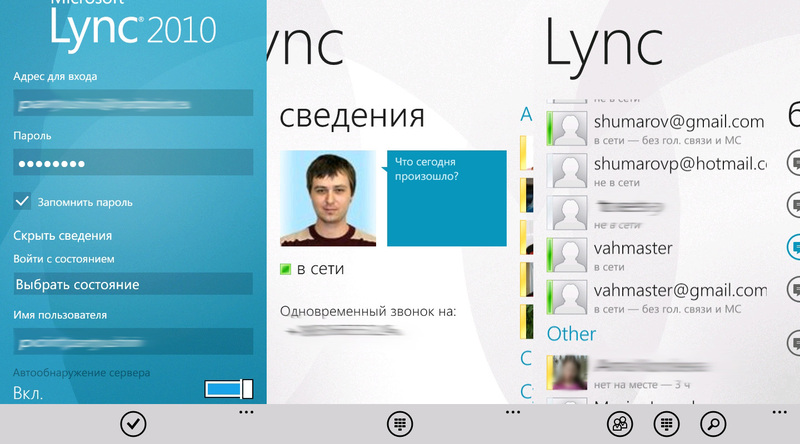

Android
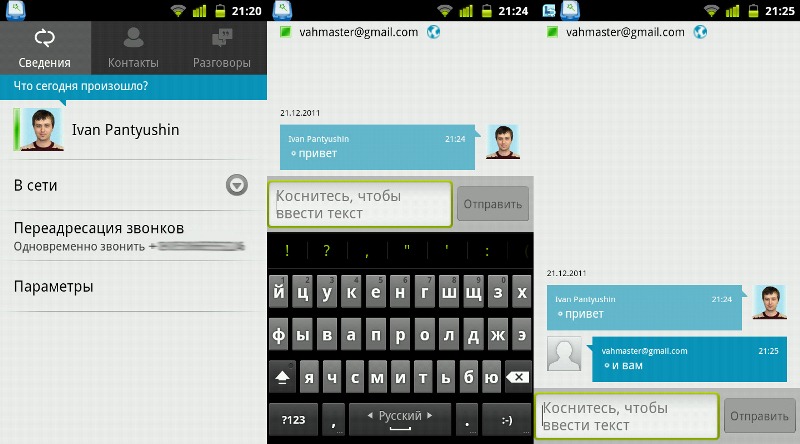
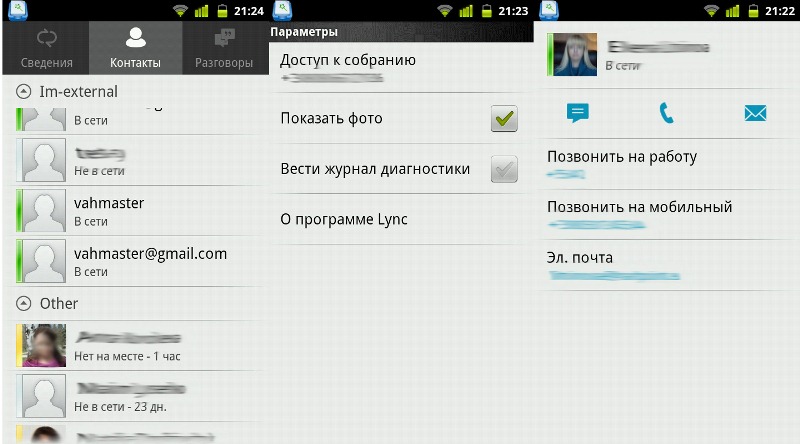
Lync setup instructions Server 2010 Mobility Service
Before installing the components, you need to install the latest Cumulative Update Lync Server 2010 Mobility Service . From the entire list, select LyncServerUpdateInstaller.exe and install it on the front-end and edge server.
Также перед установкой необходимо внести изменения в топологию – добавить внутренний и внешний порты для службы Mobility. Для этого открываем Lync Server Management Shell и вводим команды:
Set-CsWebServer –Identity –McxSipPrimaryListeningPort 5086
Set-CsWebServer –Identity –McxSipExternalListeningPort 5087
Enable-CsTopology –verbose
Используя Management Shell устанавливаем недостающие компоненты для сервиса:
Import-Module ServerManager
Add-WindowsFeature Web-Server, Web-Dyn-Compression
Скачиваем и устанавливаем Lync Server 2010 Mobility Service update
Once Bootstrapper.exe shuts down, the Lync Mobility services are ready to go. It remains only to renew the certificates for internal and external use and add FQDN records to the DNS server.
For the inner zone, you need to create a new A record lyncdiscoverinternal.sipdomain pointing to the front-end server, and on the external DNS server A record lyncdiscover pointing to the external fqdn for the front-end.
To update the internal certificates, you can use the Lync Server Deployment Wizard in the Install or Update Lync Server System section and select Step 3. Using the Certificate Request wizard, issue a new certificate containing the additional names lyncdiscoverInternal.sipdomain and lyncdiscover.sipdomain.
As an external certificate, you can use the existing wildcard (* .sipdomain) or order a new certificate with CN lyncdiscover.sipdomain or containing this name in the SAN field.
You can check the functionality of the new service using the Test-CsMcxP2PIM cmdlet. You can
download the clients at the following link:
lync.microsoft.com/en-us/Product/UserInterfaces/Pages/lync-2010-mobile.aspx
PS if the habrosociety liked it in the future, I plan some more articles by Lync
Thank you for your attention on the implementation of Lync can be read from us
